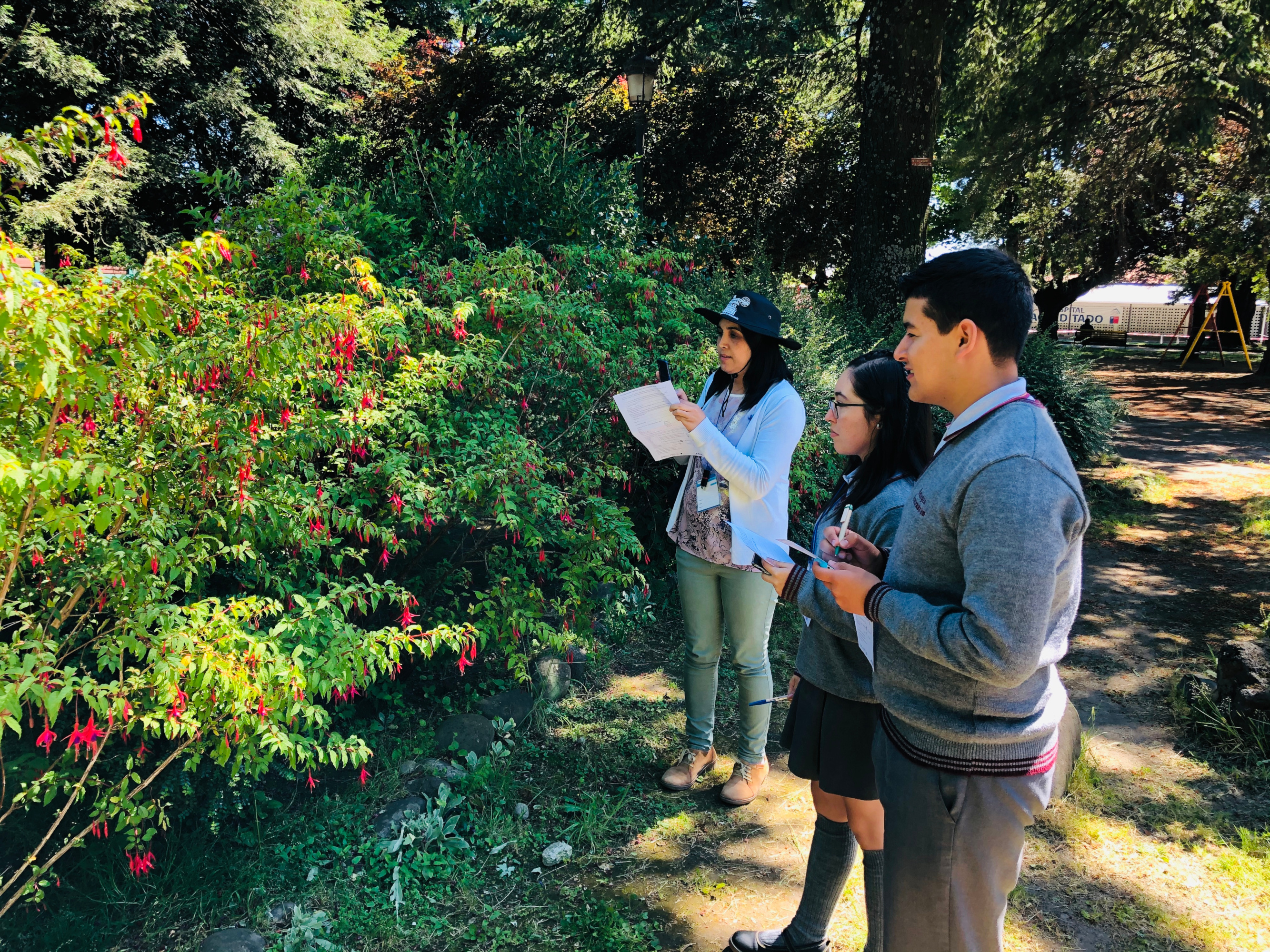Counting pollinators
In the frame of the NERC-funded project SURPASS2 (Safeguarding pollination services in a changing world: theory into practice) that gathers researchers of UK, Argentina, Brazil, and Chile, we implemented for the first time the FIT count methodology in Chile.
Through a collaboration with the local EXPLORA project from La Araucanía Region, in southern Chile, we adapted the pollinator monitoring scheme developed in the UK for South America. In this opportunity, children from elementary schools of the Araucanía region.
On 3rd and 4th December 2019, we made a pilot pollinator count around Villarrica downtown, as a result of a collaboration between the Catholic University of Valparaiso (NERC partner in Chile) and the Catholic University of Chile, who presides the regional EXPLORA project.

School children from the Araucania region studying pollinators
In this first approach to pollination, children realized that there are way more pollinators than honey bees and they got quite surprised counting large numbers of flower flies (important pollinators of the Chilean flora, due to its biogeographic context), beetles, and butterflies.
Participants noted the high abundance of the invasive bumblebee Bombus terrestris, introduced from Europe in the late ’90s for crop pollination, which caused a major decline in the native bumblebee Bombus dahlbomii. This endangered bumblebee was very common in the past and now is almost extinct despite having deep cultural roots, at it is considered as the material manifestation of the ancestors’ souls in the Mapuche cosmovision.
We expect to develop a region-wide monitoring endeavour by 2020, and hopefully, expand pollinator counts to the other regional EXPLORA programs across Chile shortly.
Francisco E. Fontúrbel, PUCV

